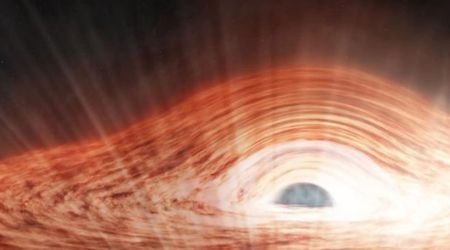Experience the mesmerizing beauty of the Perseids meteor shower from mid-July to September

The annual Perseid meteor shower, typically for stargazers in the Northern Hemisphere, is set for its next active period from July 17 to August 23, 2025. However, enthusiasts should brace for a significantly diminished spectacle this year due to unfavorable lunar conditions. Considered among the most anticipated celestial events, usually taking place between July 14 to September 1, the Perseids are renowned for their swift, bright meteors, often leaving luminous trails as they streak across the night sky, according to the American Meteor Society.

Under optimal rural viewing conditions, the shower typically delivers rates of 50 to 75 meteors per hour during its peak. These meteors originate from debris shed by Comet 109p/Swift-Tuttle during its recurring journeys through the inner solar system. The shower derives its name from the constellation Perseus — the apparent point of origin for the meteors. However, 2025's maximum activity, projected for August 12 or 13, coincides with a waning gibbous moon. This significant lunar illumination is expected to reduce visibility by at least 75 percent, rendering only the brightest meteors observable.
Despite the reduced numbers, the Perseids remain notable for their occasional fireballs — larger, more persistent explosions of light and color resulting from bigger cometary particles. These fireballs appear significantly brighter than average meteors, with apparent magnitudes greater than -3, as per NASA.

For those hoping to observe the Perseid meteor shower, despite the challenges of 2025, maximizing your viewing potential is key. Prioritize findings locations with minimal light pollution, such as rural areas or local parks. If a remote spot isn't accessible, simply turning away from streetlights can make a difference. It is crucial to allow your eyes at least 15 minutes to fully adapt to the darkness for optimal viewing of fainter meteors. During this period, avoid looking at any bright screens, including your phone, as cautioned by the Royal Museums Greenwich.

Furthermore, secure an unobstructed view of the sky, positioning yourself in an area with a wide and clear horizon, free from trees or buildings. Binoculars and telescopes are not recommended as they restrict your fields of view, and the Perseids can appear anywhere in the sky. While the constellation Perseus is the apparent point of origin, stargazing applications can assist in pinpointing its location. Remember, the days leading up to the peak (August 12 or 13, 2025) generally offer better viewing opportunities, so plan accordingly and always consult the weather forecast before heading out.
While the Perseids prepare for a challenging year, a study highlights another premier location for celestial observation: Crater Lake National Park in southern Oregon. This park has been recognized as the top US national park for stargazing. The study meticulously analyzed night sky data from the National Park Service, identifying Crater Lake as the undisputed leader among the top 20 parks, awarding it a perfect 100 index score for stargazing.

Oregon is already celebrated as home to the world's largest dark sky sanctuary, further solidifying its reputation for pristine night skies. Crater Lake, famously known as the deepest lake in the United States, extends its allure beyond its profound depths. Its exceptional clarity and minimal light pollution are key factors contributing to its new distinction as an unparalleled destination for viewing the cosmos.









